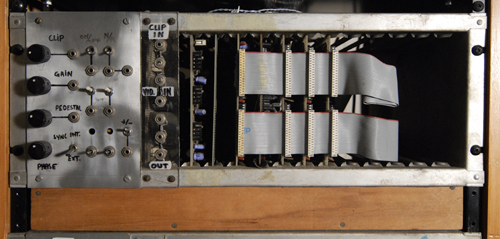| Publication Type | Unpublished |
| Authors | Matthew Schlanger |
| Source | (2011) |
| URL | http://matthewschlanger.com/blog/jones-frame-buffer-prototype |
| Keywords | tool-text |
While working for the Experimental Television Center I built the first four Jones Frame Buffers with David. Pictured here is the one I built for myself. The first few buffers where built into the same card racks that were ubiquitous at the ETC at that time, later David rewired most of the buffers into newer larger boxes. This one might be the only one that stayed in the old rack.

My buffer is the same as the other first generation buffers we built for the ETC except that it has additional second level control. Another difference between the other Jones buffers is the addition of 2v differential video inputs and output - notice the plexyglass panel. At first the frame buffer was controlled by a Sinclair ZX81 micro computer. Plans were made to update to a Z81 big board (or Xerox 820), but when the Amiga 1000 came to market David modified the I/O and software to control the frame buffer from the Amiga. This was a great improvement, with the Sinclair simple programs were written in basic. The only way to save a program was to use audio tape. For the most part the Sinclair was used to simply poke a memory location to put the buffer in the write or read mode and control came from analog patches on the front panel.
The Jones frame buffer is a unique device that offeres digital processing with analog control. The internal keyer cuts between a live digital plane and the memory plane. This version had 4 memory boards with 64 frames of memory. Later Jones added a pseudo color option which is also present in this version. I and others were writing routines in Amiga Basic that were compiled to C to control the buffer, however no one ever built the libraries that were needed to blank switching, so the routines tended to be a little noisy.